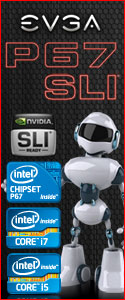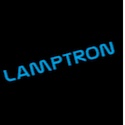The Raidmax Raptor version we have today is the red version, and that is no more apparent than having our first look inside. The motherboard tray is completely red, and while this looks pretty cool when looking at an empty case, the reality is once a system is installed you won’t see much red at all. This will especially hold true if you use a full size ATX motherboard for the build.
The motherboard tray features a large cut out just in front of where the power supply gets installed, which will aid in cable management. Above that is two rectangular rubber grommet holes to pass wires through, and a large square hole allowing easy access to a CPU cooler’s retention mechanism. Unfortunately, there is no hole at the top of the motherboard tray to facilitate a 4/8-Pin CPU AUX power cable.
Five motherboard mounting pegs are pre-installed in an ATX configuration, but always check they align properly with the motherboard to be installed.
 |
 |
 |
 |
The bottom area has a dedicated 2.5″ drive bay which will accept two SSDs. The bay is removable if you need the additional space to fit an extra long power supply. To the rear of the SSD bay is the mesh area to allow air flow to the power supply fan.
 |
 |
The rear section is home to the seven red PCI expansion slot covers, all of which are attached using thumb screws. Just above the expansion slot covers is the included 120 mm exhaust fan.
 |
 |
The interior of the top deck has two included red LED 120 mm fans. The speed of these fans can be controlled by the fan controller knobs at the top of the case.
The front area of the Raidmax Raptor is where the three 5.25″ drive bays are located along with the modular 3.5″ HDD bays. Beginning with the 5.25″ bays, we can see a tool-less design is used for securing a drive in place. The locking mechanism is simple by nature, but effective in result. By turning the dial to the open position you can remove the locking mechanism, and slide your drive in place. Then all you do is replace the mechanism, and turn the dial to the lock position. Provisions have been made to further secure the drive by adding screws from the opposite side of the drive bay.
 |
 |
 |
 |
Moving downward we come to the modular 3.5″ HDD cage. The two piece HDD cage can accept two drives on the upper portion and three on the lower. Once the upper cage is removed you can see another included red LED 120 mm intake fan. Each drive bay tray is easily removable by pressing inward on the two tabs, then just sliding it out. Each tray has the ability to accept a standard 3.5″ HDD or a 2.5″ SSD.
 |
 |
 |
 |
 |
|
Turning the Raidmax Raptor around, and having a look at the back side of the motherboard tray, shows us the pre-cable management applied to the case’s internal wiring. I was surprised to see the lack of room between the motherboard tray and the right side panel. Actually, lack of room is being too kind, there is virtually no distance at all in some places. If you plan to route cables behind the motherboard tray you will have to pay close attention to the “bulged out” areas of the right side panel, and make sure your wires line up with these areas. If Raidmax is going to place the back side of the motherboard tray this close to the right side panel, then the entire panel needs to be stamped in a manner which allows for more room.
 |
 |
All the usual front panel connections are present and accounted for, including the HD Audio and a USB 3.0 motherboard connector.
 |
 |
Removing the front panel is much more entailed than most cases on the market. You have to remove three screws that are in an awkward location inside the case. Once the three screws are out then you can pop the front panel off. There are four screws each that hold the fan and the front filter in place. The front intake fan has a filter included in the bracket that houses it. However, you have to completely disassemble the bracket from the case, and then the fan from the bracket, in order to get at the filter.
There is an option to add an additional 120 mm fan in this area should one desire to do so.
 |
 |
 |
 |
 |
|
There is an accessory pack wired to the inside of the case, which includes all the needed hardware to install a system. In addition to a case speaker, there is also a bag of Velcro Hook-and-Loop wire ties. A pretty detailed users manual is also included in the package.



 Posted in
Posted in 





